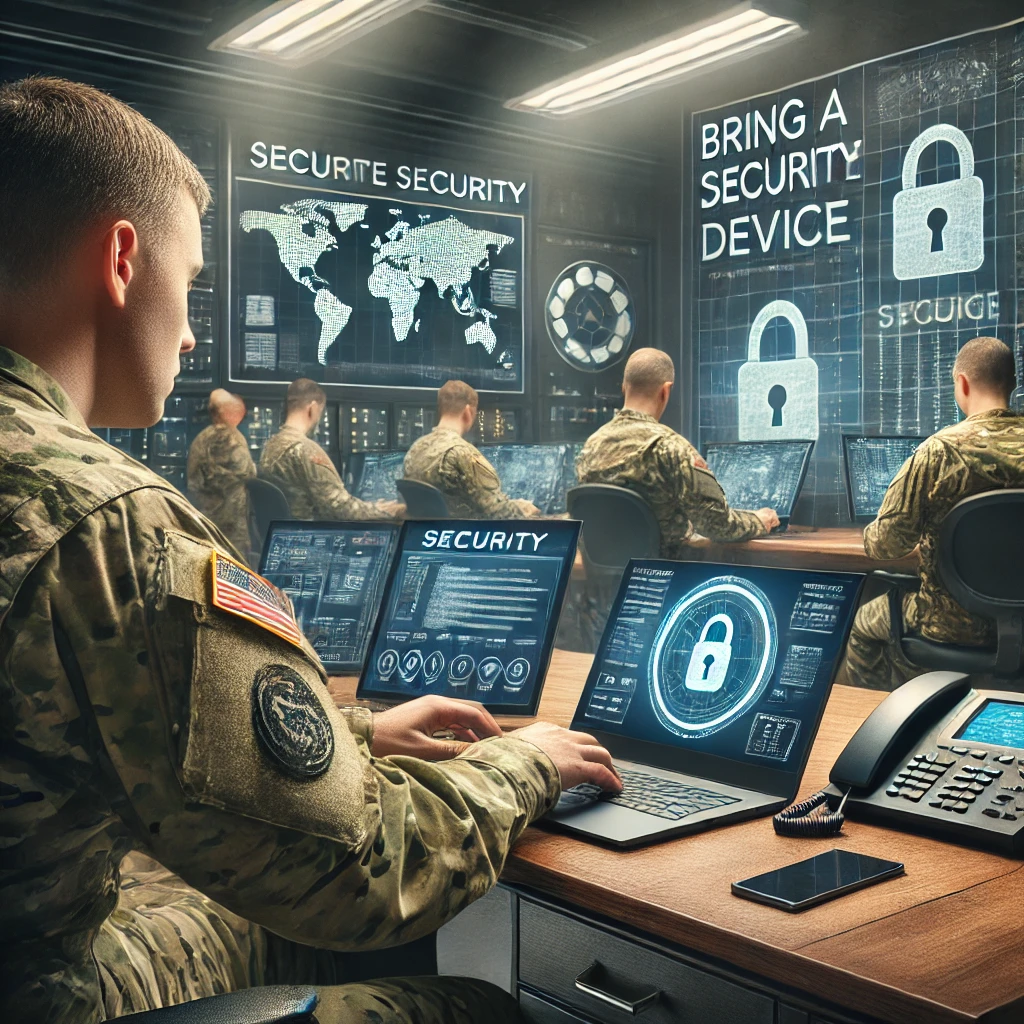Army BYOD Policies for Enhancing Security and Improving Operational Efficiency

In today’s digital era, the integration of personal devices into professional settings has become a norm. This trend, known as Bring Your Own Device (BYOD), offers numerous benefits, including enhanced flexibility, productivity, and cost savings. However, it also introduces several security challenges, particularly in sensitive environments like the military. The army, in particular, has been increasingly adopting BYOD policies to improve operational efficiency while ensuring that sensitive data remains protected.
This article explores how the army can enhance its security and improve operational efficiency through well-defined BYOD policies. It delves into the potential benefits, challenges, and best practices of implementing BYOD in military environments, with a special focus on the role of army AVD (Army Application Virtualization Devices) in ensuring secure and seamless integration.
What is BYOD and Why is It Important for the Army?
BYOD is a policy that allows employees or service members to use their personal devices, such as smartphones, laptops, and tablets, for work-related activities. In the military context, this includes using these devices for communication, accessing mission-critical data, and engaging in operational tasks, both in the field and at military bases. BYOD policies help the army by promoting flexibility, reducing hardware costs, and boosting overall productivity.
For the army, adopting BYOD policies is essential for staying competitive and ensuring that military personnel have the tools they need to carry out their missions efficiently. Additionally, BYOD can contribute to improved morale as soldiers are able to use devices they are familiar with.
However, while the potential benefits are clear, the security risks associated with BYOD can be significant. Unauthorized access to classified information, malware infections, and data breaches are all major concerns that must be addressed with robust security protocols.
The Role of Army AVD in BYOD Policies
The army AVD (Army Application Virtualization Devices) play a crucial role in mitigating the security risks associated with BYOD. These devices enable the army to separate personal and professional data, ensuring that sensitive military information is accessed only through secure, controlled environments.
Army AVDs are essentially virtualized solutions that allow military personnel to access specific applications and data remotely, without compromising security. By using AVD, the army ensures that even personal devices can access operational systems, while sensitive information remains protected within a secure, centralized network.
One of the key advantages of army AVD is the ability to enforce strict access controls. Army AVDs use secure authentication mechanisms, such as multi-factor authentication, to ensure that only authorized users can access sensitive applications. This significantly reduces the risk of data breaches or unauthorized access.
Moreover, army AVD provides the ability to remotely wipe devices if they are lost or stolen, a critical feature for maintaining operational security. This capability is especially valuable in field operations where soldiers might lose their devices or have them compromised.
Benefits of Army BYOD Policies
1. Increased Operational Efficiency
One of the most compelling reasons the army should implement BYOD policies is the improvement in operational efficiency. With the integration of personal devices, military personnel can access critical applications and information on the go. This allows for quicker decision-making, better communication, and faster response times during operations.
For example, soldiers can use their personal smartphones to access maps, mission updates, and other essential information without needing to carry additional equipment. This reduces the logistical burden of supplying specialized devices to every soldier and ensures that they can work efficiently even in remote areas.
Moreover, personal devices are often equipped with features that enhance performance, such as faster processors, better cameras, and longer battery life. These advantages can help military personnel stay connected and make use of the latest technologies in the field.
2. Cost Savings
The army can save significant amounts of money by implementing BYOD policies. Instead of purchasing and maintaining a large inventory of government-issued devices, the army can leverage the personal devices of its personnel. This reduces the costs associated with device procurement, maintenance, and replacement.
Additionally, soldiers are more likely to take better care of devices they own personally. As a result, the army can expect fewer repairs and replacements, leading to further cost savings.
3. Enhanced Flexibility and Morale
Allowing personnel to use their personal devices for work fosters a sense of freedom and flexibility. Soldiers can work from their own devices at their own pace, whether they’re on base or deployed in the field. This can improve morale and help soldiers stay connected with their families and loved ones.
Moreover, it enables more seamless communication between various units within the army. Personal devices provide instant access to emails, messaging systems, and other communication platforms, enabling military personnel to remain in constant contact with their colleagues.
Challenges of Army BYOD Policies
While the benefits of BYOD are clear, several challenges must be addressed before it can be fully integrated into the army’s operations.
1. Data Security Risks
The primary concern with BYOD is the security of sensitive data. Allowing personal devices to access classified military information increases the likelihood of data breaches, hacking attempts, and malware infections. Personal devices often lack the robust security features that military-issued devices come with, making them more vulnerable to attacks.
To mitigate these risks, the army must implement strong security measures, such as encryption, remote data wiping, and secure application access. Army AVD can play a pivotal role in ensuring that sensitive data is accessed only through secure, centralized platforms, without allowing it to be stored on personal devices.
2. Device Compatibility and Management
Not all personal devices are compatible with military-grade applications or security protocols. This can pose a challenge when implementing a BYOD policy, as soldiers may be using devices with different operating systems, specifications, and configurations.
To ensure compatibility, the army must develop a comprehensive device management plan that includes guidelines on acceptable devices, operating systems, and software. This could involve deploying a Mobile Device Management (MDM) system to monitor, secure, and manage the devices accessing military systems.
3. Privacy Concerns
Allowing personal devices to access military systems raises privacy concerns among soldiers. Some may feel uncomfortable with the idea that their personal devices could be monitored or wiped in case of security incidents.
To address these concerns, the army must establish clear privacy policies that outline the limits of monitoring and data collection on personal devices. Soldiers should be made aware of the security measures in place and be informed about their rights regarding the use of personal devices for military purposes.
Best Practices for Implementing Army BYOD Policies
To maximize the benefits of BYOD while minimizing the associated risks, the army should follow best practices for implementing these policies.
1. Define Clear Policies and Guidelines
Before adopting a BYOD policy, the army must define clear guidelines for device usage. This should include specifications on acceptable devices, operating systems, and applications. Additionally, it should outline security protocols such as encryption, authentication requirements, and procedures for remote wiping of devices.
2. Use Army AVD for Secure Access
The use of army AVDs is crucial for maintaining security in a BYOD environment. By virtualizing applications and data, the army can ensure that personnel can access mission-critical systems securely, regardless of the device they are using. This reduces the risk of unauthorized access and keeps sensitive information protected.
3. Implement Mobile Device Management (MDM) Solutions
An effective Mobile Device Management (MDM) solution is essential for monitoring and managing personal devices. MDM systems allow the army to enforce security policies, track devices, and remotely wipe data if necessary. This ensures that only authorized devices can access military networks and applications, reducing the risk of data breaches.
4. Provide Security Training and Support
To ensure that military personnel understand the risks associated with BYOD and how to use their devices securely, the army should provide regular security training. This training should cover topics such as how to recognize phishing attempts, the importance of strong passwords, and how to protect devices from malware.
Additionally, the army should provide support to personnel who encounter technical issues with their devices or have concerns about the security of their data.
5. Enforce Regular Audits and Compliance Checks
To ensure ongoing compliance with security standards, the army should conduct regular audits of devices accessing military networks. These audits can help identify any vulnerabilities or potential breaches and allow the army to take proactive measures to address them.
Conclusion
The adoption of BYOD policies in the army offers significant benefits in terms of operational efficiency, cost savings, and flexibility. However, to fully harness these advantages, the army must address the security challenges that come with integrating personal devices into military operations. By using army AVDs, implementing strong security measures, and following best practices for device management, the army can enhance its security while improving operational efficiency. With the right policies in place, BYOD can become a powerful tool for military readiness and success in an increasingly digital world.
By leveraging army AVD and other advanced security technologies, the military can ensure that its personnel remain connected, productive, and secure while carrying out their missions both at home and in the field.

Examining Australia’s Research and Development (R&D) System

jobzvice.com – A Complete Guide

How Managed IT Services Drive Business Growth and Efficiency

AI in Marketing Is No Longer a Buzzword — It’s the Strategy

The Truth About Payday Loans in the UK: Are They Worth It?

The Cybersecurity Skills That’ll Matter Most in the Next 5 Years

Integrating aosu Security Cameras with Your Smart Home: The Future of Home Security

Revolutionary Garage Door Solutions: How Firstline Garage Door Repair is Transforming Home Security in 2025








